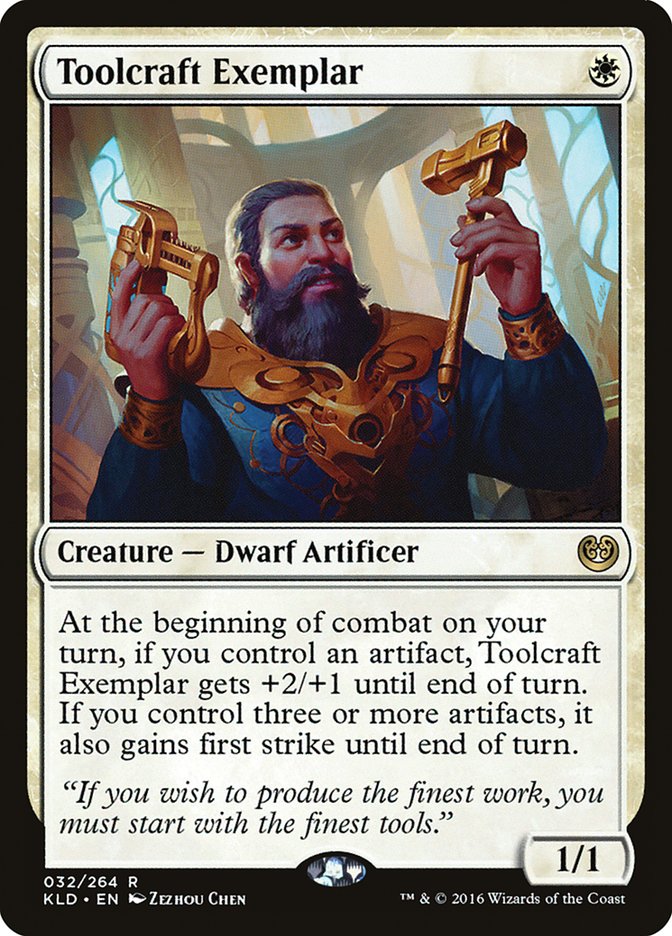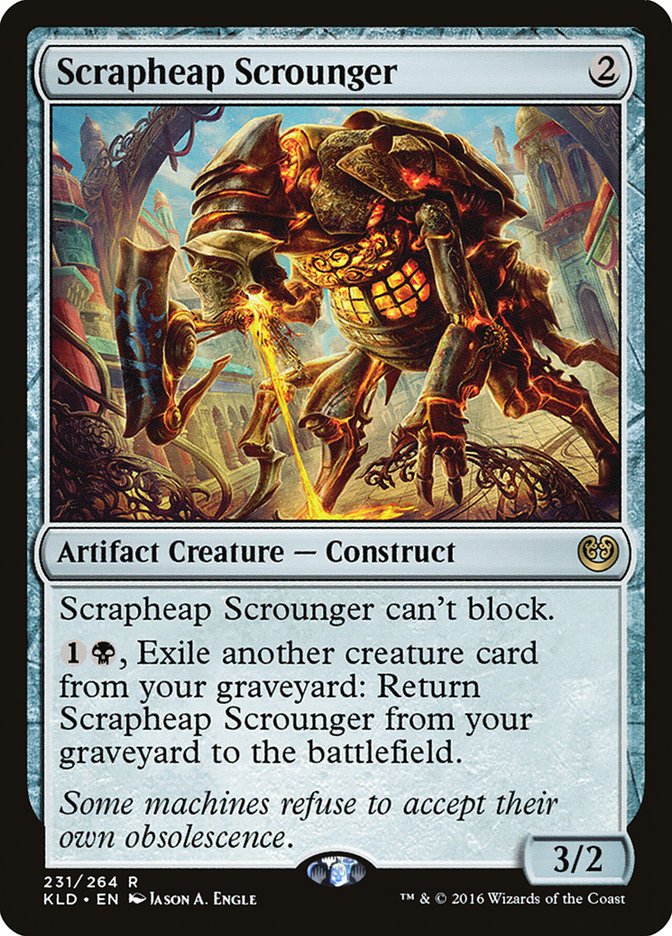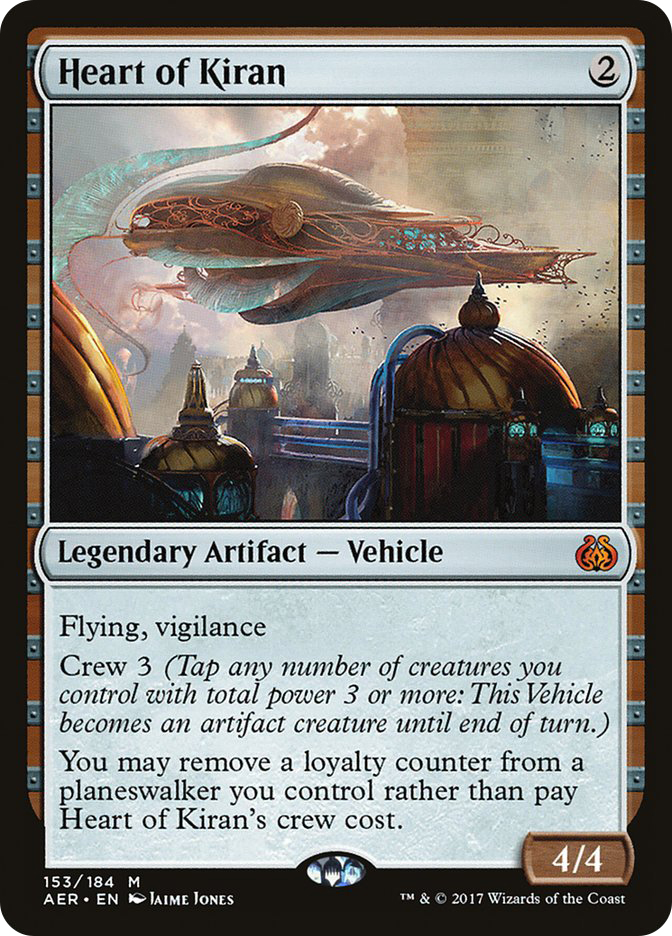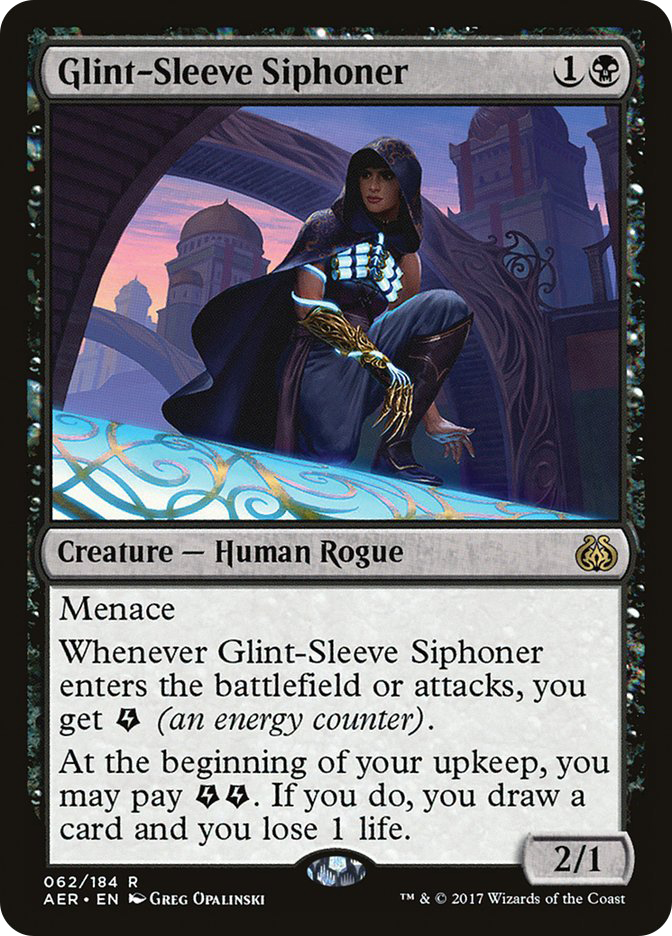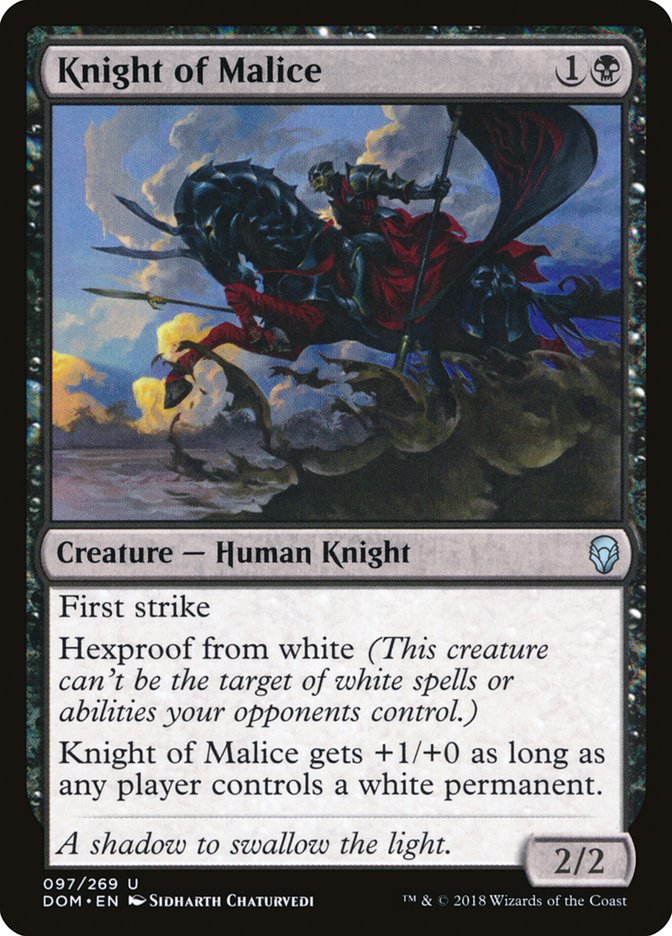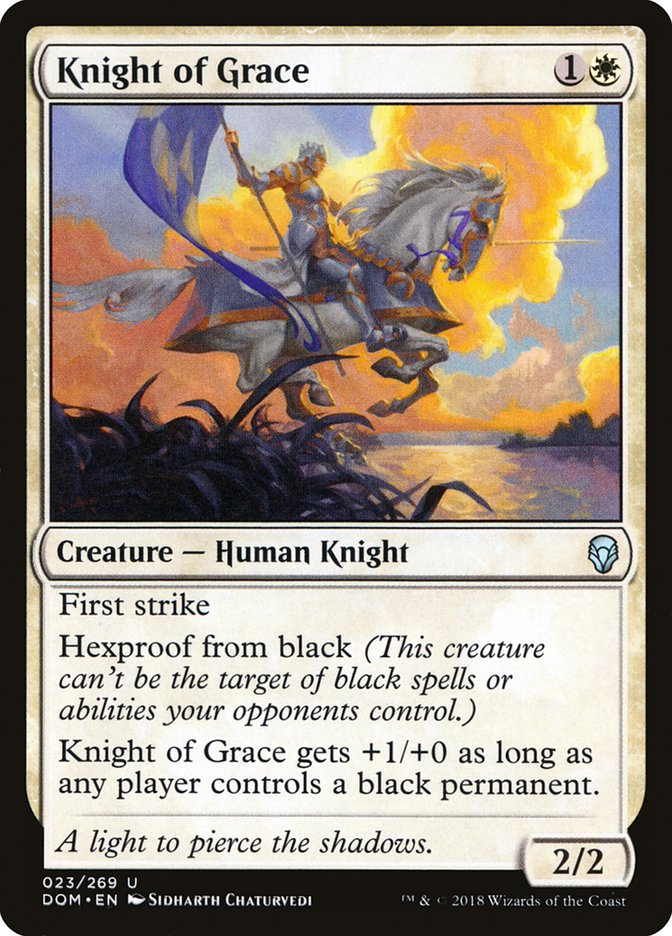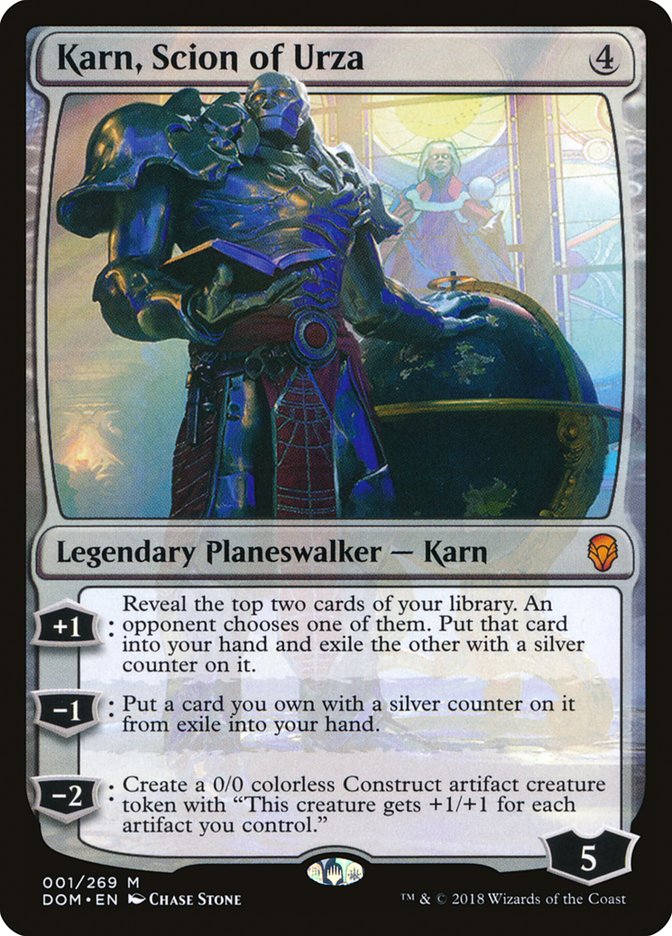Grand Prix Toronto has really opened my eyes to what’s going on in
Standard.
Creatures (15)
Planeswalkers (4)
Lands (15)
Spells (26)

This is Morgan McLaughlin’s W/B Aggro list used to win the GP last weekend.
It should be the deck to beat heading into Pro Tour Dominaria, the
tournament where we’ll finally see what the best deck in Standard actually
is.
When I look at a decklist, I like to try to pay close attention to which
cards people play four copies of because it shows what the decklist is
really all about. The ones that stand out most to me in McLaughlin’s take
on W/B Aggro are Toolcraft Exemplar, Scrapheap Scrounger, Heart of Kirin,
and Karn, Scion of Urza, making it clear that W/B Aggro is a dedicated
artifact-based aggro deck.
The Standard metagame is moving very quickly, as
the article I wrote last week
about Grant Prix Birmingham, a top 8 that had six of its eight decks with
four copies of Goblin Chainwhirler, has almost become irrelevant. The
difference between Toolcraft Exemplar and Wild Nacatl – besides the ugly
confusion with how Toolcraft Exemplar even works and it being the direct
cause of the combat rules changes – is that Toolcraft Exemplar isn’t a 3/3
for one mana. It has one toughness and it’s bad to have against Goblin
Chainwhirler or Walking Ballista.
Morgan also has three copies of Walking Ballista maindeck, himself; a nice
way to have extra artifacts for Toolcraft Exemplar while also giving
yourself solid game against Llanowar Elves, Glint-Sleeve Siphoner, Bomat
Courier, and the Exemplar. Walking Ballista always feels like “the rake”
that players must pay for their powerful one-toughness cards.
I’ve had plenty of games with Glint-Sleeve Siphoner where I cast it off
Aether Hub, untap and draw, and get two energy from the triggered ability,
thanks to Winding Constrictor. Starting turn three, I get to pay one life
to draw an additional card. To me, Glint-Sleeve Siphoner is just a Standard
legal version of Dark Confidant except somehow way better because you
always lose exactly one life.
At least every deck can play Walking Ballista if they want to, which makes
the super powerful Glint-Sleeve Siphoner hands happen less often, and they
also mean when both cards are topdecked in the late-game, the Ballista
player gets a two-for-one by killing the Siphoner and leaving a
planeswalker-like effect on the battlefield. Ballista is repeatable card
advantage in a format where mostly only planeswalkers and Gods allow for
that.
Oddly enough, Morgan has three copies of Knight of Malice maindeck and in
the finals of Grand Prix Toronto, he played against The Best Standard
Player In The World™, Brad Nelson, who had three copies of Knight of Grace
in his sideboard. Knight of Malice in the maindeck makes perfect sense to
me since W/B Aggro has many white permanents to give it a natural boost to
make it a 3/2 first strike for two mana that can consistently crew Heart of
Kiran. Knight of Grace, on the other hand, appears to be sideboard tech
against both History of New Benalia and Scrapheap Scrounger.
Planeswalkers (4)
Lands (12)
Spells (44)

This is Brad’s U/W Control list that he used to get second place at the GP.
It looks fairly straightforward until you realize in game one that he has zero win conditions maindeck. The entire strategy of this take on
U/W Control is instead of using clunkier cards that you wouldn’t want in
your opening hand to eventually deal the killing blow, like Torrential
Gearhulk, Brad has instead chosen to rely on his opponents choosing to
concede or losing to Teferi, Hero of Dominaria.
The tech with Teferi here is it’s already worth its weight in gold at
five-mana, and I’m sure Brad would be comfortable playing this card as a
four-of if it wasn’t already his primary win condition. Brad has decided
that Teferi’s ultimate reads “I win the game” and I agree completely. One
could argue that it doesn’t literally win the game, but for me it’s an
effect that wins the game 99.9% of the time so rounding up and saving a
slot in my deck which we all know is always 1/75 sounds brilliant.
Each draw phase exiles one of the opponent’s permanents and they usually
only ever have a maximum number of 60 permanents in a game. Once you
ultimate Teferi, you slowly but surely exile all their permanents and use
the one copy of Commit to prevent yourself from getting decked, which is
also cute because the Memory half stops decking while also letting you
exile seven more permanents.
Lastly, Teferi itself can prevent decking since it starts with four loyalty
and can simply target itself with the -3 adding a card to your library. If
your deck is empty and you had a fear of losing the game next turn, you can
sit there and continually loop Teferi as your draw step and each draw phase
you take triggers the emblem, further cementing your lock-position. Just
exile all your opponent’s permanents and wait for them to run out of cards
in their own deck.
My biggest fear after seeing the results of GP Toronto is that Standard
will become solved quickly and all that will matter is which side of the
debate you land on:
Who’s it gonna be?
Both decks play four of the appropriate planeswalker and we have one deck
with 25 lands and the other with 26. W/B Aggro is called an aggressive deck
because it has Scrapheap Scrounger and Heart of Kiran, but after sideboard
I would guess they get sideboarded out often for more reactive cards and a
land or two. Due to that, I feel it’s more appropriate to look at W/B Aggro
as a midrange strategy, especially after sideboard.
Unfortunately, for how much I admire the list of U/W Control that Brad
played, it’s just a dedicated control deck. I try to avoid control decks in
my deck selection process because I find the mirror can often be random and
you can’t outskill people in control mirrors like you could ten years ago.
I also feel handcuffed playing a reactive strategy since my opponents can’t
make as many mistakes against me. They must try to win quickly before my
late-game inevitability takes over, and they always make improvements after
sideboard. No matter how bad a player may be, they always know to take out
creature elimination cards for Duress. And while there’s some finesse with
when to cast Duress, it’s not much.
That all said, I do have faith in Standard moving forward and if you could
see my Magic Online account, you’d find countless brews which I can’t wait
to share with you very soon. My account often looks like this before the
Pro Tour, as when I played Temur Emerge at Pro Tour Eldritch Moon,
there were zero copies of Emrakul, the Promised End in any lists leading up
to the event. Players can and do miss dominant strategies. I’m not going to
claim that’s what’s happening now, but I will say it’s a bit premature to
claim the sky is falling and that either Karn or Teferi were big mistakes.
I wish Karn hadn’t been colorless, as it takes a little fun out of it when
I must constantly question if the card should go in whatever deck I happen
to be trying that day. I almost feel guilty referring to Llanowar Elves as
the underdog since it’s one of the best cards in the history of the game.
No matter which decks come out on top, it’s nice to know at least there’s
doubt at this point as none of the decks are in-your-face offensively
powerful and in the past that has been an issue.
I’ll be taking next week off to prepare for Pro Tour Dominaria.
Doing well at this Pro Tour has been a constant focus of mine for weeks and
I want to win now more than ever. I’m humbled to say I have the best fans
in the world and every time I sign a foil Peach Garden Oath at a tournament
it warms my heart.
As always, thanks again and I’ll see everyone in DC and Richmond in the
coming weeks.


